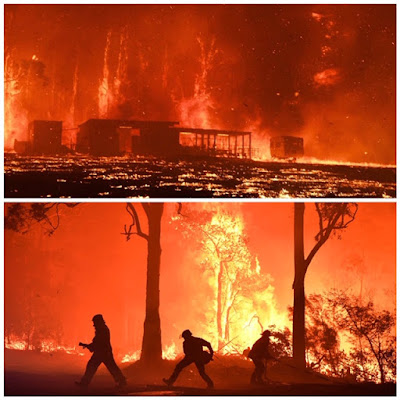A section of our northern boundary fence has been in a bad state of repair for quite a long while.
We have overcome this by running an electric fence along it.
But this has its own problems eg. maintaining batteries, flood wash aways, fallen branches, high winds blowing the ribbon off etc
So we finally decided, with the agreement of our neighbour who will share costs, to renew it.
Neighbour Bob did this type of work for a living and has all the right equipment to do the job efficiently so we contracted him with me as his apprentice and gofer.
First job was to remove the old fence and clear the fence line.
This meant cutting off and rolling up the rusted barbed wire and pulling out the rotting wooden posts and rusted star pickets with the aid of a tractor. The wire and pickets went to recycling and the posts will be cut up for fire wood.
It also meant pulling up a few smaller trees with the tractor and cutting down a couple of other big ones by chainsaw. More fire wood from some of it, a winter burn off for the rest. Thicker bush was cleared by a neighbour's bobcat.
Then the fence line was slashed and strainers (large round deeply seated posts with a stay) placed at each end.
A plain wire is then lightly stretched between the two to give a template for post placement.
We decided on wooden posts 10m apart with two star pickets in between. Wires were from the top, barbed, plain, barbed and then three plain. My neighbour has horses and didn't want barbed on the lower level and my cows will easily be kept in by a six wire fence so it was a good compromise.
The post holes were dug with a tractor driven auger to a depth of around 1m and then hand 'cleaned'. Posts are placed in the holes and soil tamped tightly around them. The steel posts were rammed in by hand with a
picket driver.
Then the six wires are strained one by one and then attached the correct distance apart to the wooden posts by staples and onto the pickets with tie wire. Where the fence had to cross a swampy area and a small creek, the post/picket pattern was altered to suit.
All was done with minimal injuries (barbed wire always tends to 'get' you) and only three snake encounters.


























